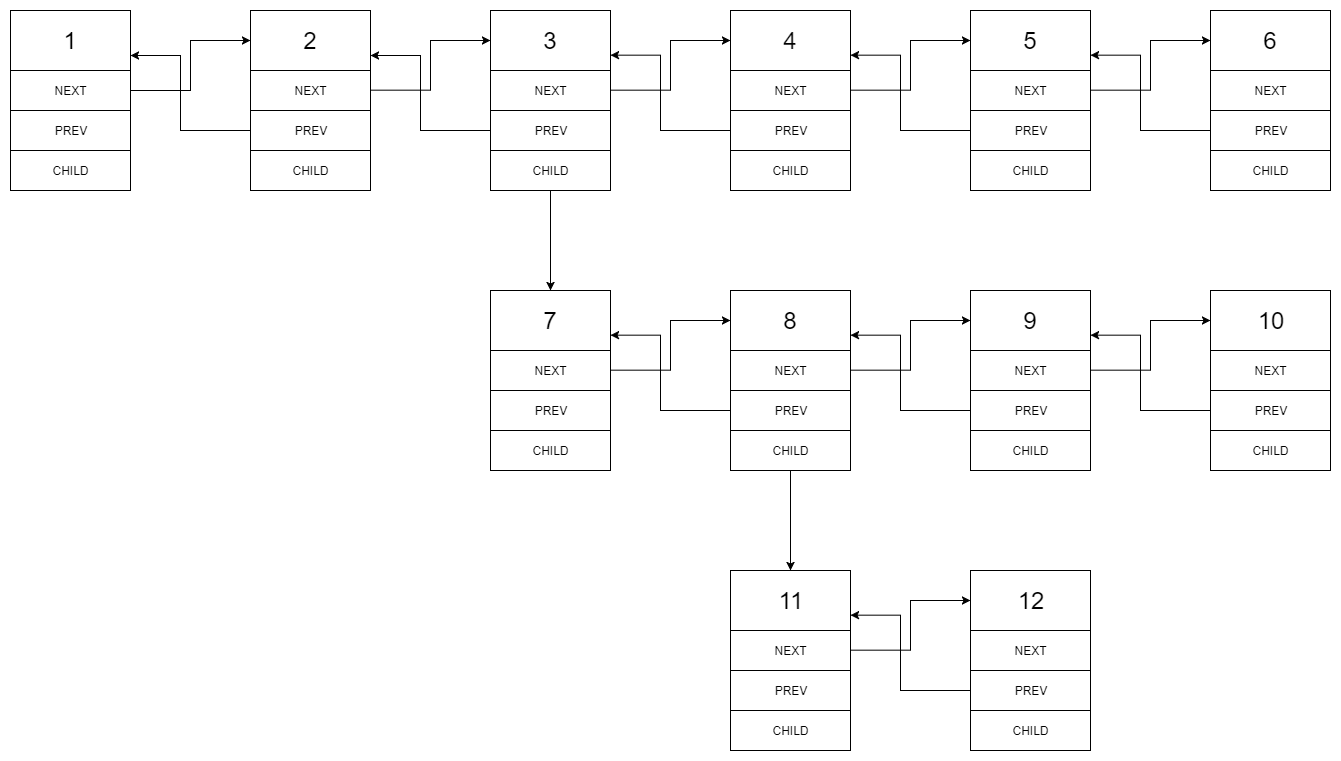You are given a doubly linked list which in addition to the next and previous pointers, it could have a child pointer, which may or may not point to a separate doubly linked list. These child lists may have one or more children of their own, and so on, to produce a multilevel data structure, as shown in the example below.
Flatten the list so that all the nodes appear in a single-level, doubly linked list. You are given the head of the first level of the list.
Example 1:
Input: head = [1,2,3,4,5,6,null,null,null,7,8,9,10,null,null,11,12] Output: [1,2,3,7,8,11,12,9,10,4,5,6] Explanation: The multilevel linked list in the input is as follows:

After flattening the multilevel linked list it becomes:

Example 2:
Input: head = [1,2,null,3] Output: [1,3,2] Explanation: The input multilevel linked list is as follows: 1---2---NULL | 3---NULL
Example 3:
Input: head = [] Output: []
How multilevel linked list is represented in test case:
We use the multilevel linked list from Example 1 above:
1---2---3---4---5---6--NULL
|
7---8---9---10--NULL
|
11--12--NULL
The serialization of each level is as follows:
[1,2,3,4,5,6,null] [7,8,9,10,null] [11,12,null]
To serialize all levels together we will add nulls in each level to signify no node connects to the upper node of the previous level. The serialization becomes:
[1,2,3,4,5,6,null] [null,null,7,8,9,10,null] [null,11,12,null]
Merging the serialization of each level and removing trailing nulls we obtain:
[1,2,3,4,5,6,null,null,null,7,8,9,10,null,null,11,12]
class Solution { public Node flatten(Node head) { if( head == null) return head; // Pointer Node p = head; while( p!= null) { /* CASE 1: if no child, proceed */ if( p.child == null ) { p = p.next; continue; } /* CASE 2: got child, find the tail of the child and link it to p.next */ Node temp = p.child; // Find the tail of the child while( temp.next != null ) temp = temp.next; // Connect tail with p.next, if it is not null temp.next = p.next; if( p.next != null ) p.next.prev = temp; // Connect p with p.child, and remove p.child p.next = p.child; p.next.prev = p; p.child = null; } return head; } }
总结:
Better draw a diagram, there are two cases
1. current node hasn't child, continue

2. current node has kids. There are two key parts need to attention 1. the last node of child points to current next node, above is 10 to 4. 2. curent.next = current.child.
And we need to care the situation that current node is the last node, if it's not, we can process the above work
Finally make current node.child = null.
Anothe thing is that we don't need to do p = p.next if it has child , cuz after flatten the current node P, it can automatically be processed.